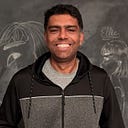Must Read for Engineers and Scientists
The book contains two parts.
The first part is about the Feynman being Feynman — curious and ‘crazy’ :) Thoroughly enjoying like the first book.
The second part, the appendix, and the epilogue of this book focus on the Challenger accident. It reads like a fast-paced investigative novel that will have a big reveal at the end. However, there is no such big reveal at the end about the accident. But, it does reveal a lot about engineering, science, due process, and management, and their aspects that are supposed to enable large and complex undertakings like space missions but at times fail to do so. This part illustrates how uncertainty is an integral part of science and engineering and yet we try to ignore it or play loose with it. Kinda suggests science and engineering must adopt a humbler approach to problems particularly when they are influenced by uncertainty and reality.
Interestingly, Feynman lauds software development practices used to develop software for space mission.
Here are two quotes that stuck a chord.
- For a successful technology, reality must take precedence over public relations, for Nature cannot be fooled.
- To every man is given the key to the gates of heaven; the same key opens the gates of hell. — This Buddhist quote is mentioned in the context that science/technology is powerful and has not concept of good or bad. It is up to the wielder of science/technology to put it good or bad use.
Looking back, I wish that I had read this book a few years ago. Then, I would have included this as reading material in my “verification and validation” course.
